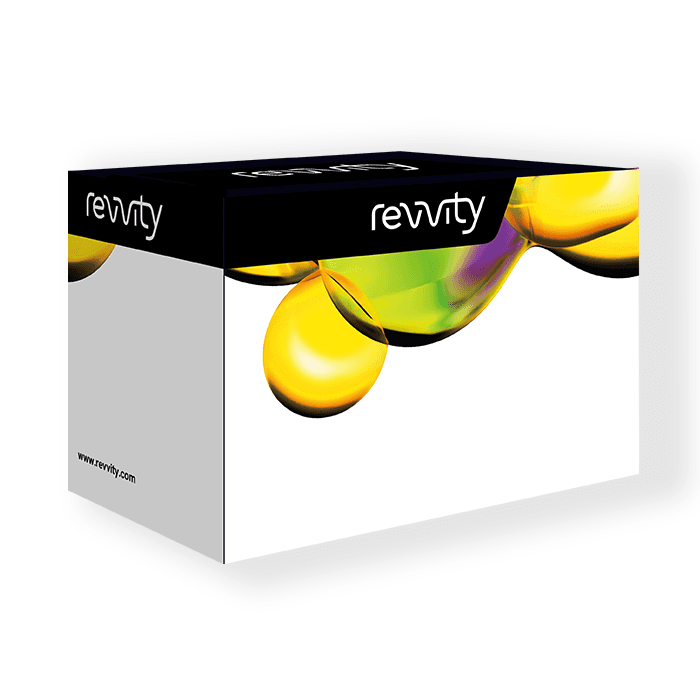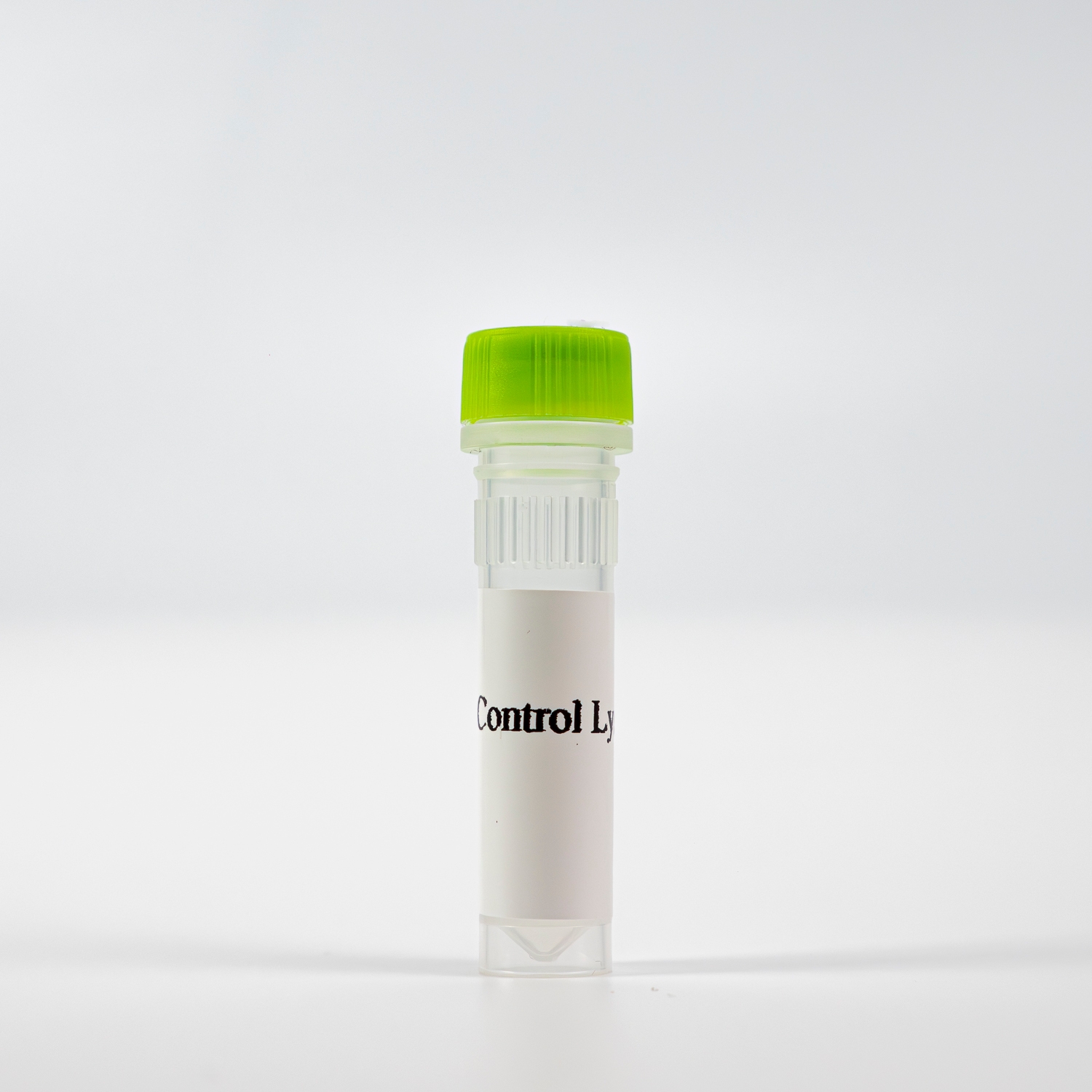

HTRF Human & Mouse Phospho-RSK1 (Ser380) Detection Kit, 10,000 Assay Points


HTRF Human & Mouse Phospho-RSK1 (Ser380) Detection Kit, 10,000 Assay Points






This HTRF kit enables the cell-based quantitative detection of phosphorylated RSK1 Serine 380.
| Feature | Specification |
|---|---|
| Application | Cell Signaling |
| Sample Volume | 16 µL |
This HTRF kit enables the cell-based quantitative detection of phosphorylated RSK1 Serine 380.



HTRF Human & Mouse Phospho-RSK1 (Ser380) Detection Kit, 10,000 Assay Points



HTRF Human & Mouse Phospho-RSK1 (Ser380) Detection Kit, 10,000 Assay Points



Product information
Overview
The Phospho-RSK1 (S380) Cellular Kit is designed for the robust quantification of phosphorylated RSK1 directly using a streamlined mix-and-read, no-wash protocol. RSK1 plays a pivotal role in cell proliferation and differentiation. This kit can be used from basic research to high throughput drug screening. Its versatility means it is suitable for many applications, ranging from basic research to the analysis of pharmacological questions in cellular models.
Specifications
| Application |
Cell Signaling
|
|---|---|
| Automation Compatible |
Yes
|
| Brand |
HTRF
|
| Detection Modality |
HTRF
|
| Lysis Buffer Compatibility |
Lysis Buffer 2
|
| Molecular Modification |
Phosphorylation
|
| Product Group |
Kit
|
| Sample Volume |
16 µL
|
| Shipping Conditions |
Shipped in Dry Ice
|
| Target Class |
Phosphoproteins
|
| Target Species |
Human
Mouse
|
| Technology |
TR-FRET
|
| Therapeutic Area |
Infectious Diseases
Metabolism/Diabetes
Oncology & Inflammation
Rare Diseases
|
| Unit Size |
10,000 Assay Points
|
Video gallery

HTRF Human & Mouse Phospho-RSK1 (Ser380) Detection Kit, 10,000 Assay Points

HTRF Human & Mouse Phospho-RSK1 (Ser380) Detection Kit, 10,000 Assay Points

How it works
Phospho-RSK1 (S380) assay principle
The Phospho-RSK1 (S380) Assay measures RSK1 phosphorylation at Serine 380. Unlike Western Blot, the assay is entirely plate-based and does not require gels, electrophoresis, or transfer. The Total RSK1 assay uses 2 labeled antibodies: one with a donor fluorophore, the other with an acceptor. The first antibody was selected for its specific binding to the phosphorylated motif on the protein, and the second for its ability to recognize the protein independent of its phosphorylation state. Protein phosphorylation enables an immune-complex formation involving both labeled antibodies and which brings the donor fluorophore into close proximity to the acceptor, thereby generating a FRET signal. Its intensity is directly proportional to the concentration of phosphorylated protein present in the sample, and provides a means of assessing the protein’s phosphorylation state under a no-wash assay format.

Phospho-RSK1 (S380) 2-plate assay protocol
The 2 plate protocol involves culturing cells in a 96-well plate before lysis. Then lysates are transferred into a 384-well low volume detection plate before the addition of HTRF Phospho-RSK1 (S380) detection reagents. This protocol enables the cells' viability and confluence to be monitored.

Phospho-RSK1 (S380) 1-plate assay protocol
Detection of Phospho-RSK1 (S380) with HTRF reagents can be performed in a single plate used for culturing, stimulation, and lysis. No washing steps are required. This HTS designed protocol enables miniaturization while maintaining robust HTRF quality.

Assay validation
Total and phospho RSK1 (S380) detection in EGF-stimulated A431 cells
A431 cells were plated under 100 µl in a 96-well plates (80,000 cells/well) in complete culture medium and incubated overnight at 37°C, 5% CO2. The day after, cells were treated with 50 µl of increasing concentrations of EGF for 5 min at 37°C, 5% CO2. After medium removal, cells were then lysed with 100 µL of supplemented lysis buffer #2 for 30 minutes at RT under gentle shaking, and 16 µL of lysate were transferred into a low volume white microplate before the addition of 2 µL of the HTRF D2 detection reagent and 2 µL HTRF Eu-K detection reagent. Total RSK1 and phospho-RSK1 S380 were quantified in separate wells. The HTRF signal was recorded after ON incubation.

Simplified pathway
Function and regulation of RSK1
The Ribosomal protein S6 kinase alpha-1 (RSK1) is a downstream component of the MAP kinase and ERK signaling pathway and participates to the regulation of transcription factors, cell proliferation, survival, and differentiation with Serine/Threonine kinase.
It is phosphorylated at Thr359/Ser363 by MAPK1/ERK as an initial activation, and then autophosphorylates at Ser380 which allow PDK1 binding.

Resources
Are you looking for resources, click on the resource type to explore further.
This guide provides you an overview of HTRF applications in several therapeutic areas.
SDS, COAs, Manuals and more
Are you looking for technical documents related to the product? We have categorized them in dedicated sections below. Explore now.
- LanguageEnglishCountryUnited States
- LanguageFrenchCountryFrance
- LanguageGermanCountryGermany
- Resource TypeManualLanguageEnglishCountry-


How can we help you?
We are here to answer your questions.






































